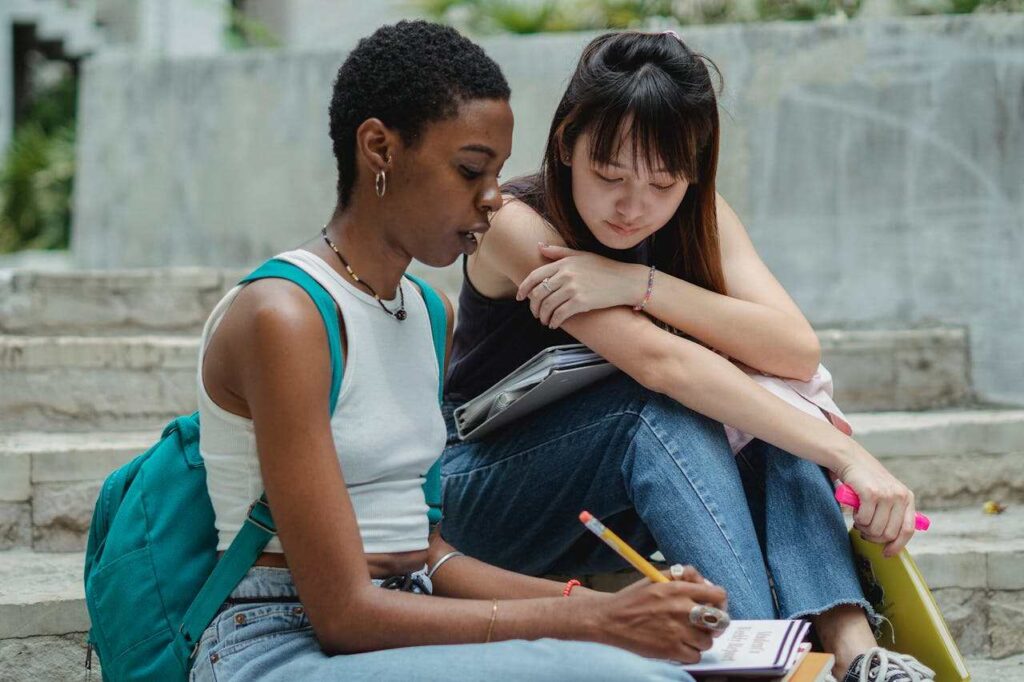When you’re grinding on your Extended Essay research, knowing the difference between primary and secondary sources isn’t just important—it’s a must. If you can juggle these sources right, your EE will stand out! From what I’ve seen, many students struggle to mix both types, but once you nail it, your research will pop and be way more academically sound.
What Are Primary and Secondary Sources?
Determining the difference between primary and secondary sources is essential for nailing your work, especially for challenging EE subjects. Getting this vibe helps you sort out your research and strengthens your analysis. If you don’t mix it up, you might depend on one source, which could tank your Extended Essay.
What Is a Primary Source?
From what I’ve seen, primary sources make your EE stand out. These are the raw materials, like first-hand stories or original facts, that your case is built on. Primary sources let you interact with your subject directly, whether you’re reading old history texts, the results of a science experiment, or an interview you performed.
In a History EE, for instance, you could use letters or writings from famous people from history to back up your argument. You could use the results of an experiment or notes you made in the field as your primary data for a Science EE.
Using primary sources in your EE shows that you are original, in my opinion. That shows you’re not just accepting other people’s views; you’re also reading the core texts and giving your opinion. This interest is significant for IB assessments, giving your Extended Essay writing a new, authentic point of view. But sometimes, it’s hard to collect and analyze primary data. That’s why it’s essential to start early and pick helpful and trustworthy sources.
What Is a Secondary Source?
Secondary sources are interpretations or analyses of primary sources, such as journal articles, reviews, or textbooks. In my view, these sources give you the background and academic knowledge you can use to shape your primary data. If you are working on a Literature EE, for example, you could look at academic papers or literary reviews discussing the themes and images in a book.
Secondary sources are critical to connect your case to a more significant scholarly topic. They help you show that you understand the bigger picture of your topic and connect your primary sources to other research already done. From what I’ve seen, using good secondary sources supports your claims and shows that you researched and know about the main arguments in your field. But it’s important not to let these sources take away from the research you did on your own.
Learn how incorporating graphs, charts, and tables in your EE can help you present complex research effectively and meet IB criteria.

Why Do You Need Both Types in Your EE Research?
Primary sources give you creativity and depth, while secondary sources give you background and academic backing. I’ve seen that using only one source type can make your writing look flat. Finding a good mix between the two will make your case more robust and show the reviewer you know much about the subject.
Let’s say you’re teaching a History EE class about World War II. You could look at letters or diaries (your primary sources) to get a clear sense of what people who lived through the war thought and felt. You can also compare these first-hand stories with historians’ opinions (your secondary sources) to see how these different points of view fit into a bigger picture of history. This way, you will get two types of evidence: first-hand experience and expert research.
According to general IB guidelines, using both sources makes your study more credible. Primary sources let you offer new ideas, while secondary sources connect those ideas to academic talks that have already been going on for a while. This mix makes for a more profound, more complex writing that shows a lot of thought.
In the EE research, it’s essential to use both types of sources because of the following:
- Originality and direct proof come from primary sources.
- Secondary sources give academic support and background information.
- Using both types together makes your case stronger and your research more complete.
You can also show different points of view by using both types for a solid data analysis, which can help strengthen your case. From what I’ve seen, this method makes your writing more complete and interesting. For example, primary sources give you unique insights and first-hand data. In contrast, secondary sources help you put that data in the context of other studies by giving you opinions and points of view from experts in the field.
Examples of Primary vs. Secondary Sources in Different Subjects
From what I’ve seen, the difference between primary and secondary sources can change based on the topic you’re getting into for your EE. Every subject’s got its vibe regarding evidence, and knowing where to dig can level up your essay game. Let’s chop it up by subject so you can get a better vibe on juggling any number of sources like a pro.
History EE Research
For a History EE, you need to use primary sources to get direct proof from the time, era, or event you’re learning:
- Primary sources – letters, speeches, diaries, original government documents.
- Secondary sources – historical analyses, biographies, scholarly articles interpreting events.
These could be emails, government records, old newspaper stories, or reports of events written by people who were there. Winston Churchill’s battle talks are one example of primary data that you could use to study the language of leadership during World War II.
Secondary sources, on the other hand, are the interpretations of these events made by historians or other academics who weren’t there but have read a lot about them. These could be history books, research papers, or reviews of Churchill’s leadership style. I believe that using both types of sources makes your case stronger. You can give a more in-depth analysis that includes different points of view by combining Churchill’s words with a historian’s opinion of how he led.
Science EE Research
In the sciences, primary sources are things like the data from experiments or field studies you do yourself, or they could be the raw data from other tests:
- Primary sources – experimental data, field studies, lab reports.
- Secondary sources – peer-reviewed articles, scientific reviews, research papers.
This first-hand information gives your writing a strong base. For example, if you’re writing an EE in Biology, you could use data from your studies on temperature changes or plant growth as primary sources.
In the sciences, on the other hand, secondary sources are usually journal pieces, literature reviews, or research papers that have been reviewed by other scientists and talk about similar studies or other scientific ideas. From my point of view, secondary sources help to support and put your results in context by connecting them to what other experts have found. IB standards say that using trustworthy secondary sources also shows that you are involved with the larger scientific community and have taken the time to learn about the research already done in your area.
Literature EE Research
When you’re doing a Literature EE, the works you are analyzing—whether they are a book, a song, or a play — are your primary sources:
- Primary sources – novels, poems, plays, letters by authors.
- Secondary sources – literary critiques, academic papers, analyses of themes and characters.
As an illustration, the play’s text would be your primary source if you were writing about Shakespeare’s Macbeth. You will analyze these works, allowing you to interact closely with the author’s language, ideas, and characters.
In Literature, secondary sources are the reviews, articles, and academic papers other experts have written about the same works. I know that using these secondary sources helps you understand how other people have interpreted the work and gives your study more context. For instance, a research paper on the theme of power in Macbeth could help you build your case and back up what you say about the characters and the story.
Learn how annotated bibliographies in EE writing can significantly improve the quality of your research and help you stay organized throughout your essay.
Don’t let the stress of the IB curriculum hold you back.
Are you having trouble coming up with topic suggestions for your IB Extended Essay? Or do you need help with Internal Assessment?
Our experienced writers can help you choose the perfect topic and assist you with any assignment.
You can order an Extended Essay tailored to your specific subject and requirements.
Our experienced IB writers are always ready to help.
Simply click:

How to Evaluate Primary vs. Secondary Sources?
Not all sources are the same. In my opinion, one of the most critical parts of your EE study is figuring out how credible and reliable both primary and secondary sources are. IB standards say that how well you judge the quality of your sources directly affects your case strength and your Extended Essay grade. How can you be sure that the sources you use are reliable?
To determine how much you can believe the source, you must ask yourself a few key questions:
- Was the source created contemporaneously with the event or later on?
- Is there any evident bias, and how might that affect the reliability?
- What was the purpose of the source — was it meant to inform, persuade, or entertain?
For example, a journal entry made during World War II might give you a clear picture of what someone went through, but their own opinions might also skew it. On the other hand, a biography written decades later might have been affected by reflection or the author’s changing views.
A slightly different method is needed to evaluate secondary sources. I always think it’s safe to trust studies and papers reviewed by other experts in the field. However, not all secondary sources undergo such strict screening. Websites, blog posts, and books that other experts may not have reviewed should be avoided.
From my observation, you should always look into the author’s background. Is the author of the piece or book a master in the subject? What kind of education or work experience do they have? Based on this, you can trust the information highly. The date of release is another thing to think about. Research in the social sciences and sciences is constantly changing, so using the newest data.
Final Thoughts
So, to write a good Extended Essay, you need to find the right mix between primary and secondary sources. Primary sources give your case novelty, and secondary sources give you essential background information. Together, they make a strong, convincing academic argument.
Our team at IBWritingService.com is the best if you need professional help with your Extended Essay. Our writers know what they’re doing and have been doing it for years.




